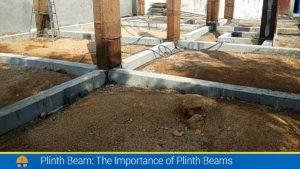A damp proof course is an architectural and engineering terminology in a building construction to describe a protective layer applied to protect the building components or walls from damage caused by moisture. In short, the word DPC is commonly used in specifications and drawings to show damp proofing materials. In this article, we will explain what a damp proof course is and how it helps protect the buildings from damage from moisture.
What is a Damp Proof Course?
A damp proof course (DPC) is a protective layer which acts as a moisture barrier in building components, walls and floor slabs. The moisture tends to move through capillary action in the building walls. DPC prevents the capillary movement of moisture from the ground to the wall above or from the roof slab to the lower part of the building.
There are several different types of damp-proof courses applied to the building. A layer of lean concrete, bitumen and plastic sheets are used as DPC during the construction of the building. A plain cement concrete layer, with a thickness of at least 25 mm, is typically laid before brickwork. Usually, a concrete mix with a ratio of 1:2:4 is used for this purpose.
Bitumen is used as Bituminous coating and bitumen felt. Bituminous coating is applied on the cleaned concrete surface. The cleaning operation is done using kerosene and clean clothes. Bituminous coating is applied on basement walls, shear walls, etc. where the concrete components are in contact with soil.
Polythene sheets or plastic sheets may be used as DPC for flooring slabs which are in contact with the earth beneath. On a prepared, compacted and dried ground, a layer of plastic sheet is laid.
Also, read: What is Pointing?: 8 Types of Pointings In Masonry Works
Application
The primary function of any damp-proof course (dpc) or damp-proof membrane (dpm) is to provide an impermeable barrier to the passage of moisture. The three basic ways in which damp proof courses are used is to:-
- Resist moisture penetration from below (rising damp).
- Resist moisture penetration from above.
- Resist moisture penetration from horizontal entry.
References:
- British Standards Institution. (Year). BS 8215: Code of practice for design and installation of damp-proof courses in masonry construction. British Standards Institution.
- Chudley, R. and Greeno, R. (2010). Building Construction Handbook (ed. 8th). Elsevier Ltd. ISBN: 978-1-85617-805-1
![]()







